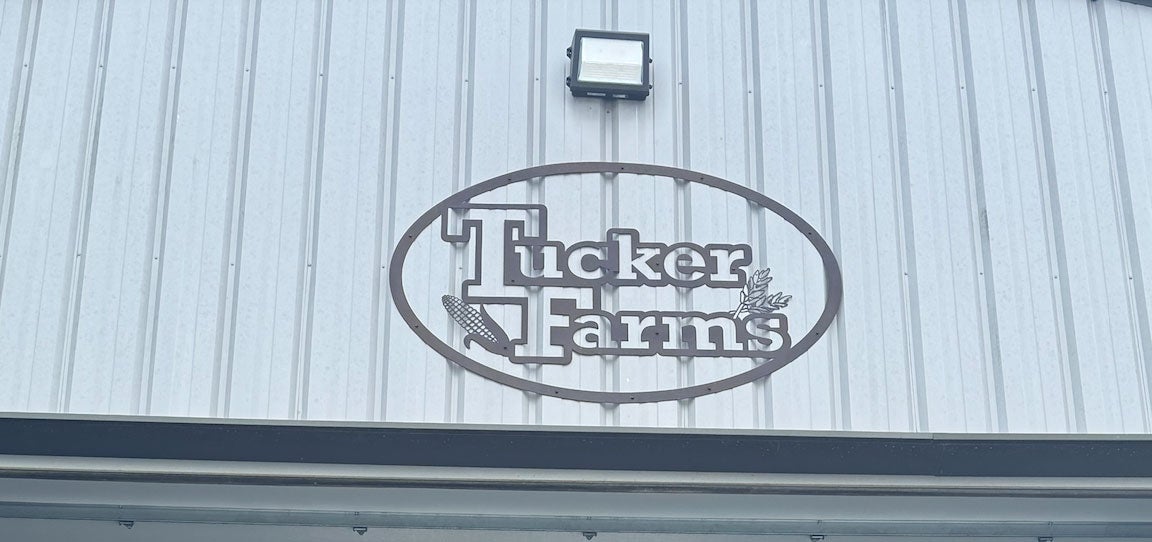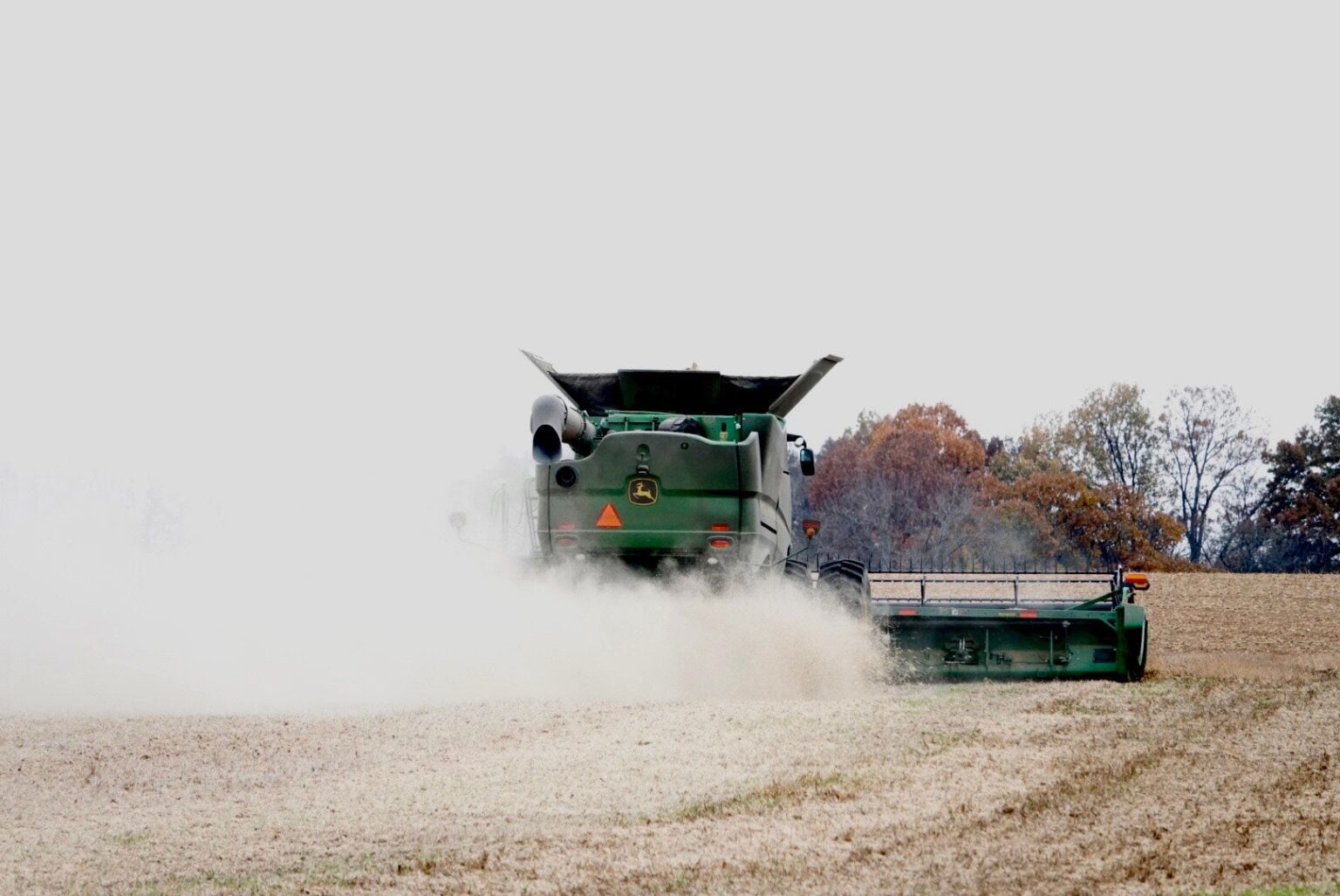The farm shop is the hub of the Tucker family’s farming operation. It is where Jennifer Tucker’s equipment is stored and repaired outside of Bowling Green, Kentucky. The barn hosts meetings between farmers, neighbors, dealers, and equipment technicians — the headquarters for the nearly 3,000-acre operation.
Before 2023, all farm record-keeping was done in the home office. Equipment data was connected via Bluetooth or occasionally transferred using SD cards, and tasks often required a technician to visit the farm to download the information using a hotspot. Home and farm security were also concerns, with limited peace of mind when it came to managing multiple barn properties and farm vehicles of high value.
The farm had previously relied on satellite internet, an inconsistent and expensive solution the family used only at the house. But in 2023, the installation of fiber-optic broadband internet in the barn significantly improved connectivity and helped maximize the success of the Tuckers’ operation.

Wi-Fi in the barn, combined with expanded cellular networks, is keeping farming families on the cutting edge of the latest precision agriculture technologies and simplifying business operations in rural communities.
Being connected, Tucker explains, is now a whole new and “additional way to do business” in agriculture.
Driving connection and equity
Urban sprawl and other forms of development are encroaching on the land her family farms outside Bowling Green, where they grow corn, wheat, and soybeans. Tucker describes the fourth-generation farm as being in an area that everybody wants to live in now and said they are feeling the pressure of that change.
“We farm more and more in an urban area,” she said. “It’s becoming more urban than it is rural.”
In rural areas, urbanization means higher land prices, zoning challenges, and more traffic. Yet for the past five years, that also means better access to broadband. More residents moving into what used to be rural areas created pressure on land and infrastructure. This was one of two key events that increased demand for internet access in the region.
The year 2020 was another wake-up call. When schools closed due to COVID-19, children without home internet access depended entirely on connectivity to attend virtual classes. It was a disadvantage to many of the more rural students, Tucker said.
According to 2017 U.S. Census data, before broadband investments ramped up, only 65 percent of households in “completely rural” areas had broadband subscriptions. Even beyond rural communities, there was a clear link between median household income and broadband adoption rates. The lower the income, the less likely the household was on the internet grid, which posed educational inequities in Kentucky.
During the COVID crisis, a report by Common Sense Media found that Kentucky ranked ninth among U.S. states for children without internet access and that 36 percent of K-12 schools lacked adequate connectivity. In response, many rural families relied on public resources by parking outside McDonald’s to use Wi-Fi, visiting libraries, or borrowing hotspot devices from innovative school districts.
In Kentucky today, 92.2 percent of households now have access to such services, a sharp increase from pre-COVID days. Those who benefit from rural broadband are boosting the farm’s productivity, along with the lives of those who live, study, and work on the property.
A connected command center
The Tucker family installed fiber-optic, fast-speed internet at both their home and farm shop in 2023, no longer relying on satellite service. They subscribed to Charter Communications from Spectrum, which is investing billions into fiber-optic networks to deliver multi-gigabit internet speeds.
Satellite internet is available to almost everyone across the United States, but at a cost: It is weather sensitive, often limited in data, and has slower speeds. Fiber-optic Wi-Fi is more stable, can provide speeds over 1 Gbps, and has no data caps, but requires underground or aerial cable installation, which is not yet available everywhere, especially in rural areas.
The farm office and all record-keeping were moved from the home into the shop, where a new workspace is now fully connected to high-speed internet. Newly added security cameras also help protect the property too.
“We’ve had some strange instances happen at our shop, and we needed to install cameras, and the only way we could have access to the cameras on our phones was to have internet at our shop, so we signed up for the internet [in the shop],” Tucker said. On large farms, equipment is often left out in the open, under the assumption no one will disturb it. But added security provides reassurance, or “peace of mind.”
Connectivity in the shop has also enhanced on-farm meetings with agronomists and seed or equipment dealers. Staff can now pull up real-time data on an iPad rather than relying on spotty cell service. Deliveries can also be dropped off without anyone being home, with packages protected by the security cameras.
When the farm became connected, business could occur whether Jennifer or her other operators — like her husband, father-in-law, or oldest son — were home or not.
The meetings are efficient, saving time and getting field data from the field to the hands of the experts even quicker, Tucker said. Data can quickly be pulled off of tractors and planters to know how to strategize field inputs on the GPS. While some of their equipment still uses Bluetooth or SD cards, Tucker said, “I think the internet will play a bigger part in some of our equipment.”
Now, no matter what plot they are working on across their 2,800 acres, they can stay connected from their shop’s Wi-Fi and the expanded cellular coverage on Spectrum Mobile, a cellular network that has been given more connection in their fields .
The fight for more
Rural Kentucky is making significant strides in digital infrastructure, and farms like the Tuckers’ are showing how broadband access directly improves operations and security.
In 2024, Charter’s rural expansion efforts extended high-speed internet to more than 13,000 new locations across the state. In Warren County alone, gigabit broadband became available to over 2,800 homes and small businesses, including Tucker Farms.
Connecting rural communities to the rest of the world has been no small feat. Broadband access rose to the top of policy agendas back in 2020, both in Frankfort, Kentucky, and in Washington, D.C., becoming a top issue for farm groups and rural advocates.
Data from the National Agricultural Statistics Service study shows technology used on the farm reliant on internet is rising. Roughly 85 percent of U.S. farms reported having internet access. Of those, 51 percent used broadband, 75 percent used cellular data plans, 69 percent had desktops or laptops in the office, and 82 percent used smartphones.
Connected farms lead to safer operations and more productive crop production. It is all helping move agriculture and ag innovation forward. As farms seek greater efficiency and time savings, internet access in the barn and out in the field is delivering results — if broadband providers and policymakers continue investing to close the connectivity gap.
Jake Zajkowski is a freelance agriculture journalist covering farm policy, global food systems and the rural Midwest. Raised on vegetable farms in northern Ohio, he now studies at Cornell University.


